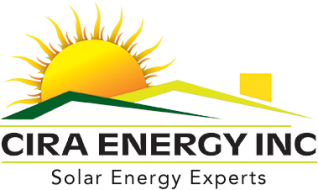Cira Energy knows solar power systems inside-out
Providing solar power solutions for Southern California
How solar systems work
How does a solar system produce electricity?
- Light striking the solar modules contains energy in the form of photons. When the photons hit the module’s silicon solar cells, energy is transferred, freeing up electrons. These electrons move through the silicon to the nearest wires and create positive and negative charges. When the millions of electrons flow through the wires of the solar electric system, they create electric power. The more intense the light, the more electrons that are available and the larger the electric current produced.
- The electricity from the solar array is in the form of Direct Current (DC), much like a high voltage battery. It is of no use in our houses, however, because our appliances operate on Alternating Current (AC). To make the electricity usage, the wires joining all the solar modules carry this DC electricity from the solar array to the Inverter. The Inverter transforms the DC into AC electricity and feeds that electricity into your home’s existing wiring, typically through a circuit breaker in an existing panel. The inverter is usually located in a basement, garage or outdoors.
- The inverter is a sophisticated electronic device with its own operating software, and it monitors the output of the solar modules. It also monitors the voltage and frequency of the electricity coming from the utility, so that it’s electric output precisely matches the utility-supplied electricity. For safety reasons, if the utility power is interrupted, the inverter shuts down and waits for the utility power to be restored. Five minutes after grid electricity is restored, it resumes normal operation.
- At times the solar array will produce more electricity than is presently being consumed. The extra electricity produced naturally flows out of the house and onto the utility wires. The outward flow registers on the utility meter by spinning it in reverse, giving the solar electric system owner full credit for the excess electricity they produce. If the solar array produces less, then additional electricity from the utility flows in to supply the balance needed (of course, this will always be the case at night).
- In the event you produce more electricity in any month than you use, you can carry the credit forward. Most customers produce more than they use on sunny days, building up a credit to be used at night or on days of lower production.
Start saving on your utility bill


